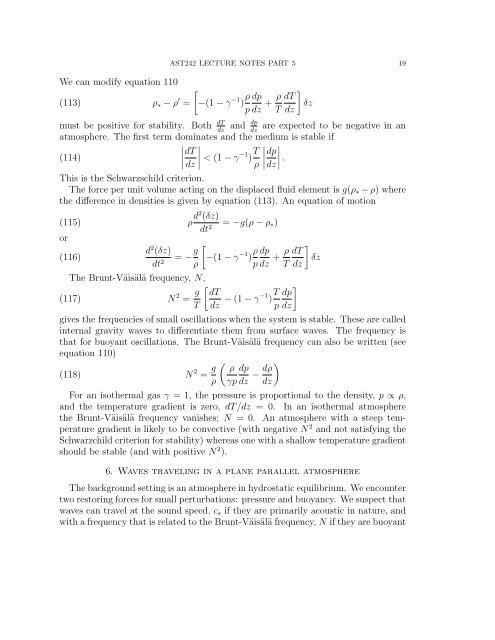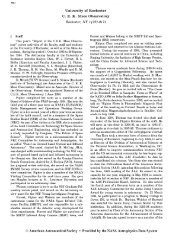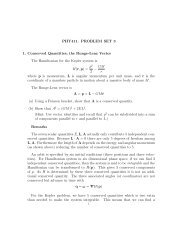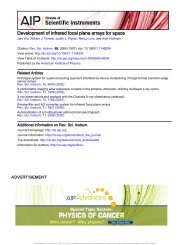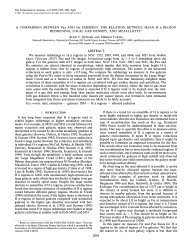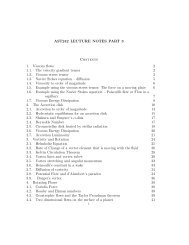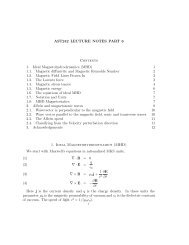AST242 LECTURE NOTES PART 5 Contents 1. Waves and ...
AST242 LECTURE NOTES PART 5 Contents 1. Waves and ...
AST242 LECTURE NOTES PART 5 Contents 1. Waves and ...
- No tags were found...
Create successful ePaper yourself
Turn your PDF publications into a flip-book with our unique Google optimized e-Paper software.
<strong>AST242</strong> <strong>LECTURE</strong> <strong>NOTES</strong> <strong>PART</strong> 5 19We can modify equation 110[(113) ρ ∗ − ρ ′ = −(1 − γ −1 ) ρ dpp dz + ρ T]dTδzdzmust be positive for stability. Both dT dp<strong>and</strong> are expected to be negative in <strong>and</strong>z dzatmosphere. The first term dominates <strong>and</strong> the medium is stable if(114)dT∣ dz ∣ < (1 − γ−1 ) T dpρ ∣dz∣ .This is the Schwarzschild criterion.The force per unit volume acting on the displaced fluid element is g(ρ ∗ − ρ) wherethe difference in densities is given by equation (113). An equation of motion(115) ρ d2 (δz)= −g(ρ − ρdt 2 ∗ )ord 2 (δz)(116)= − g [−(1 − γ −1 ) ρ dpdt 2 ρp dz + ρ TThe Brunt-Väisälä frequency, N,(117) N 2 = g [ dTT dz − (1 − γ−1 ) T ]dpp dz]dTδzdzgives the frequencies of small oscillations when the system is stable. These are calledinternal gravity waves to differentiate them from surface waves. The frequency isthat for buoyant oscillations. The Brunt-Väisälä frequency can also be written (seeequation 110)(118) N 2 = g ( ρ dpρ γp dz − dρ )dzFor an isothermal gas γ = 1, the pressure is proportional to the density, p ∝ ρ,<strong>and</strong> the temperature gradient is zero, dT/dz = 0. In an isothermal atmospherethe Brunt-Väisälä frequency vanishes; N = 0. An atmosphere with a steep temperaturegradient is likely to be convective (with negative N 2 <strong>and</strong> not satisfying theSchwarzchild criterion for stability) whereas one with a shallow temperature gradientshould be stable (<strong>and</strong> with positive N 2 ).6. <strong>Waves</strong> traveling in a plane parallel atmosphereThe background setting is an atmosphere in hydrostatic equilibrium. We encountertwo restoring forces for small perturbations: pressure <strong>and</strong> buoyancy. We suspect thatwaves can travel at the sound speed, c s if they are primarily acoustic in nature, <strong>and</strong>with a frequency that is related to the Brunt-Väisälä frequency, N if they are buoyant


